
Challenges and Consequences of Climate Change: Tips for Dealing With Water Scarcity
The consequences of climate change are tangible: extreme temperatures and heatwaves, droughts and dry spells as well as heavy rainfall, which often causes flooding. We are facing major challenges, especially when it comes to water management. In this article, you will find out how climate change is affecting the water balance and how you can deal with these changes. We also provide practical tips on how to deal with water scarcity and make your garden more resilient.
This Article Contains:
- Consequences of the Climate Crisis for the Water Cycle
- Gardening With Climate Change: The Challenge of Water Scarcity
- Water Scarcity in the Garden: Dealing With Dryness and Droughts
- Minimizing Water Consumption and Closing Water Cycles
- Water Storage: Collecting and Using Rainwater
- Increase Water Storage Capacity in the Soil
- Frequently Asked Questions About Water Scarcity
Quick Overview
Consequences of Climate Change: Water Scarcity
As a result of the climate crisis, we can observe a global trend in which severe storms and precipitation as well as droughts and unpredictable temperature fluctuations are increasing. This has a major impact on the water cycle, which is why water management in the garden is becoming increasingly important to deal with water scarcity.
Dealing With Water Shortages in the Garden
- Minimize water consumption: Use water resources wisely and make sure you water sparingly. You can also use methods such as mulching or the no-dig method to minimize soil evaporation.
- Water storage: Collect rainwater in rain barrels, cisterns, ponds or swales/contour ditches in your garden. This way you have water available at a later date and stabilize the microclimate in your garden at the same time.
- Increase water storage capacity in the soil: A good soil structure and humus help your soil to store more water. Your garden soil should also be planted all year round, which provides shade and keeps additional water around the plant roots in the soil.
Consequences of the Climate Crisis for the Water Cycle
Climate change is altering the weather and climate worldwide. The severity and changes in weather and climate vary from region to region, but there is a global trend that can be observed worldwide: severe storms and precipitation, but also droughts, hot dry periods and strong temperature fluctuations are increasing. At the same time, we have destroyed our soils in many places to such an extent that water cannot seep in and be absorbed properly, resulting in flooding and erosion (European Commission, 2025).
Another factor is that water quality is steadily declining. Agriculture also plays a major role in this. The excessive use of mineral fertilizers, which easily end up in the groundwater via the soil and ultimately in water bodies, increases the nutrient content in our water bodies. As a result, algae and bacteria can grow much faster. Sounds harmless at first, but they consume oxygen in the water and at a certain point the water can tip over (German Environment Agency, 2024). For everyone, but especially for us gardeners, this means that we have to adapt - and quickly.

Gardening With Climate Change: The Challenge of Water Scarcity
Water management in particular will become a central cornerstone that will be increasingly important in counteracting water scarcity. Water is a valuable resource that is already scarce in many regions of the world or, conversely, causes flooding and destroys landscapes. It is therefore important to develop more mindfulness here and learn how we can adapt our gardens and landscapes accordingly to make them more resilient. In my opinion, this is a basic principle in gardening and in our use of natural resources and habitats. Unfortunately, this has not always been our priority in the past and we are now experiencing this first hand. However, there are some methods that can help you as a gardener and your garden to deal with these challenges.
Water Scarcity in the Garden: Dealing With Dryness and Droughts
Sensible and cycle-based water management will be the key to ensuring a secure water supply in the future. On the one hand, it is important to use your available water consciously. On the other hand, elements for water storage and methods that increase the water storage capacity of your soil play a decisive role.

Minimizing Water Consumption and Closing Water Cycles
Water is life and is essential for a functioning ecosystem and for growing vegetables and food. Due to the increasing scarcity of water in many parts of the world, we need to adapt our water consumption and use this resource consciously. Here are some practical and simple tips on how you can use the water that is available to you wisely.
Water-Saving Watering
Watering is always something that causes uncertainty among gardeners:
"When is the best time to water? How often should I water my plants? How can I save water when watering?
These are all questions that concern gardeners. Here are a few simple tips and tricks to optimize your water consumption. It is important that you water wisely and not automatically. First, you should always check the soil by using your finger to check whether the soil is still moist. Don't just check the surface of the soil, but also feel the deeper layers with your finger. Often only the top layer is dry and it is then not necessary to water. You should also always keep an eye on the weather, because if it is supposed to rain, you can also wait for the rain. Adapt to nature and observe your plants and your garden with a curious eye. The first sign is usually when plants drop their leaves, then you can react. Most vegetable plants cope well with short periods of drought. You can find many more helpful tips in our article on Water-Saving Watering.
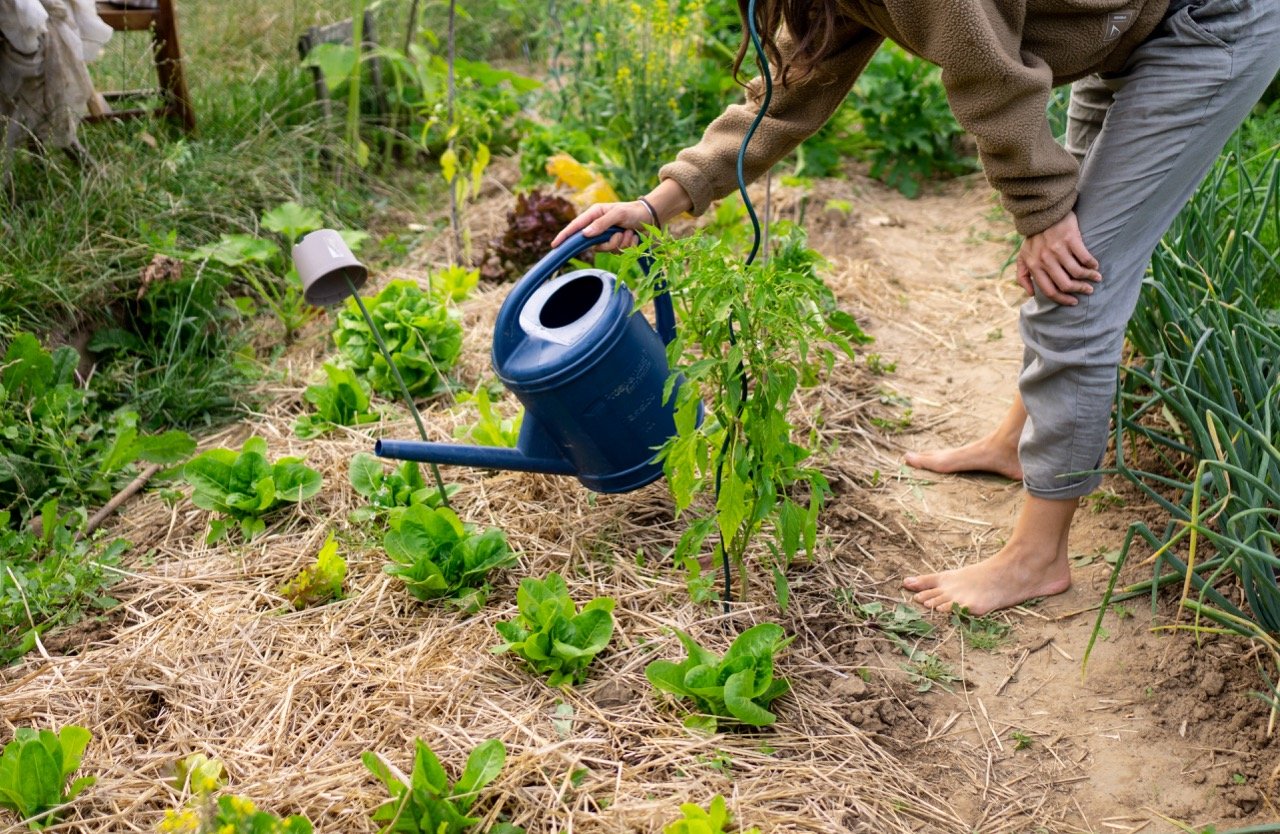
I would also like to add that it is important to water the roots of the plants and not the plant itself. So always water close to the ground and not in sunshine to reduce evaporation. Watering with a watering can is less efficient than drip irrigation. Automated drip irrigation has the advantage that you can set the watering times (before sunrise and after sunset). In addition, the water is released drop by drop, allowing it to infiltrate the soil well and minimizing evaporation. To further reduce evaporation in the soil, ground-covering plants help to provide shade and regulate the microclimate on the ground. These measures may sound simple, but they have an immense effect on the water cycle in your vegetable patch and garden.

Ever Feel Lost in the Garden? Connect With Others!
In the Fryd community, you’ll find friendly and helpful gardeners ready to share ideas, give advice, and celebrate wins (and failures) together. Gardening is just more fun when you’re not doing it alone.
Join the Community NowWater Storage: Collecting and Using Rainwater
The availability of fresh water is changing in most regions of the world. In Central Europe, it can be assumed that groundwater levels will continue to fall and that there will be more droughts (European Commission, 2025). For this reason, it is essential to absorb existing precipitation in order to cushion such periods of drought. Here are some ways for you to collect rainwater in your garden and store it for later.
In addition to the advantage of having more water available, such water reservoirs have a positive effect on the microclimate in your garden. Water stores heat and thus balances out strong temperature fluctuations. A good example of this are marine regions or other areas close to water: The temperature fluctuations between day and night are usually smaller there because the water stores heat during the day and releases it again at night. This balancing effect can also benefit your vegetable garden, as many plants are sensitive to strong temperature fluctuations and often react with restricted growth.
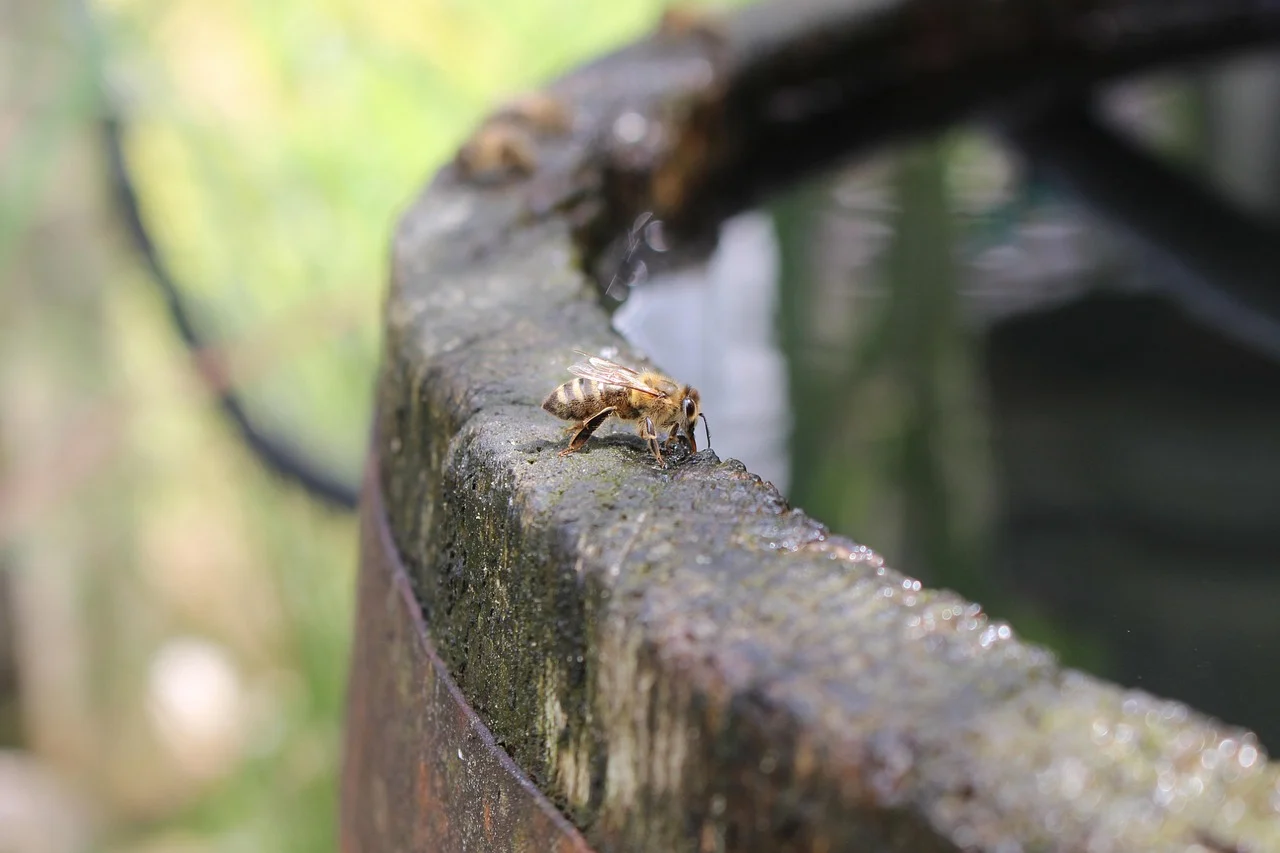
Water Storage Methods
- Very classic and easy to implement: rain barrels or cisterns to collect rainwater via the roof. Rainwater is also usually the best water for watering plants, as it does not contain as much lime as tap water.
- A pond is also a great water reservoir. Ponds also have the advantage of providing habitats and a source of water for numerous insects and amphibians. A habitat that is becoming increasingly scarce.
- In permaculture there are so-called swales. There is no fixed German translation for this, but they could be called contour ditches or water retention ditches. The word contour ditches is a good way of recognizing how swales are created. They are elongated and run across the slope along the contours. The excavated material is piled up downhill to form a small embankment, which is usually planted to stabilize the slope and minimize erosion. In this way, they catch rainwater, which can slowly seep into the soil. On the one hand, this reduces erosion. On the other hand, this increases the water storage capacity on the slope enormously.
Increase Water Storage Capacity in the Soil
The Swales are a good example of how to increase the water storage capacity in the soil. Here are a few more tips and tricks on how you can easily store and retain water in the soil.
Soil fertility and structure are the most important factors in the ability of soil to store water. Humus-rich soils store more water than sandy and nutrient-poor soils. It is therefore a basic requirement to promote and maintain humus formation in your garden. For good soil structure and health, we recommend Charles Dowding's No-Dig Method. This involves no digging and mainly piling up compost and organic matter so that the soil constantly has new organic matter to turn into humus.

Reduce Evaporation: Year-Round Planting & Mulch
Vegetation is another essential factor for high water retention in the soil. Year-round, ground-covering planting increases the water content in the soil. This may seem counterintuitive at first, because you might think that more plants use more water. But it actually has the opposite effect, for several reasons: Not only do plants provide shade for the soil surface, keeping evaporation low, but plant roots also store and hold water at the soil surface, preventing it from simply seeping through (GEO, 2025). Especially large trees with deep roots have an enormous water storage capacity around their roots. This is why it is also a common method in permaculture to plant tree grates (the area below the tree crown). You can also use this effect in your garden and benefit from the shade cast by the tree at the same time.
Mulching is also a very simple method of reducing water evaporation from the soil. In my experience, mulching is extremely helpful in keeping the soil moist for longer and thus reducing the frequency of watering.
In many very dry regions in Spain, it is also a common technique to create sunken beds instead of raised beds. This also reduces evaporation and protects the plants from the wind and weather.
If you have any questions or comments, please write to us at [email protected]. Would you like to receive helpful gardening tips all year round and plan your own beds optimally? Then register here or download the Fryd app for Android or iOS.
Fryd - your digital bed planner
Sources:
- European Commission, 2025: Consequences of climate change; accessed online on 06.05.25 at https://climate.ec.europa.eu/climate-change/consequences-climate-change_de#:~:text=Kein%20Gebiet%20auf%20der%20Welt,extreme%20Hitzewellen%20und%20Dürren%20zunehmen.
- GEO, 2025: These plants cope well with drought; accessed online on 07.05.25 at https://www.geo.de/natur/trockenresistente-pflanzen--tipps-fuer-den-klimafesten-garten-33579258.html
- German Environment Agency, 2024: Eutrophication; accessed online on 05.05.25 at https://www.umweltbundesamt.de/themen/wasser/gewaesser/meere/nutzung-belastungen/eutrophierung#eutrophierung-was-bedeutet-das

Marie
Marie is an agronomist. She is particularly interested in the sustainable and organic cultivation of vegetables and other plants. In her own garden, she gained experience and likes to try things out to learn from nature. She is particularly interested in the values and principles of permaculture, in order to contribute not only to the well-being of nature, but also to the well-being of people and future generations.
Learn MoreCurrent Topics in the Community

Liked 2 times
My winter onions are also growing quite well. They are of the Red Cross variety. I planted them on 28.10 in a felt pot 60x30x20 cm
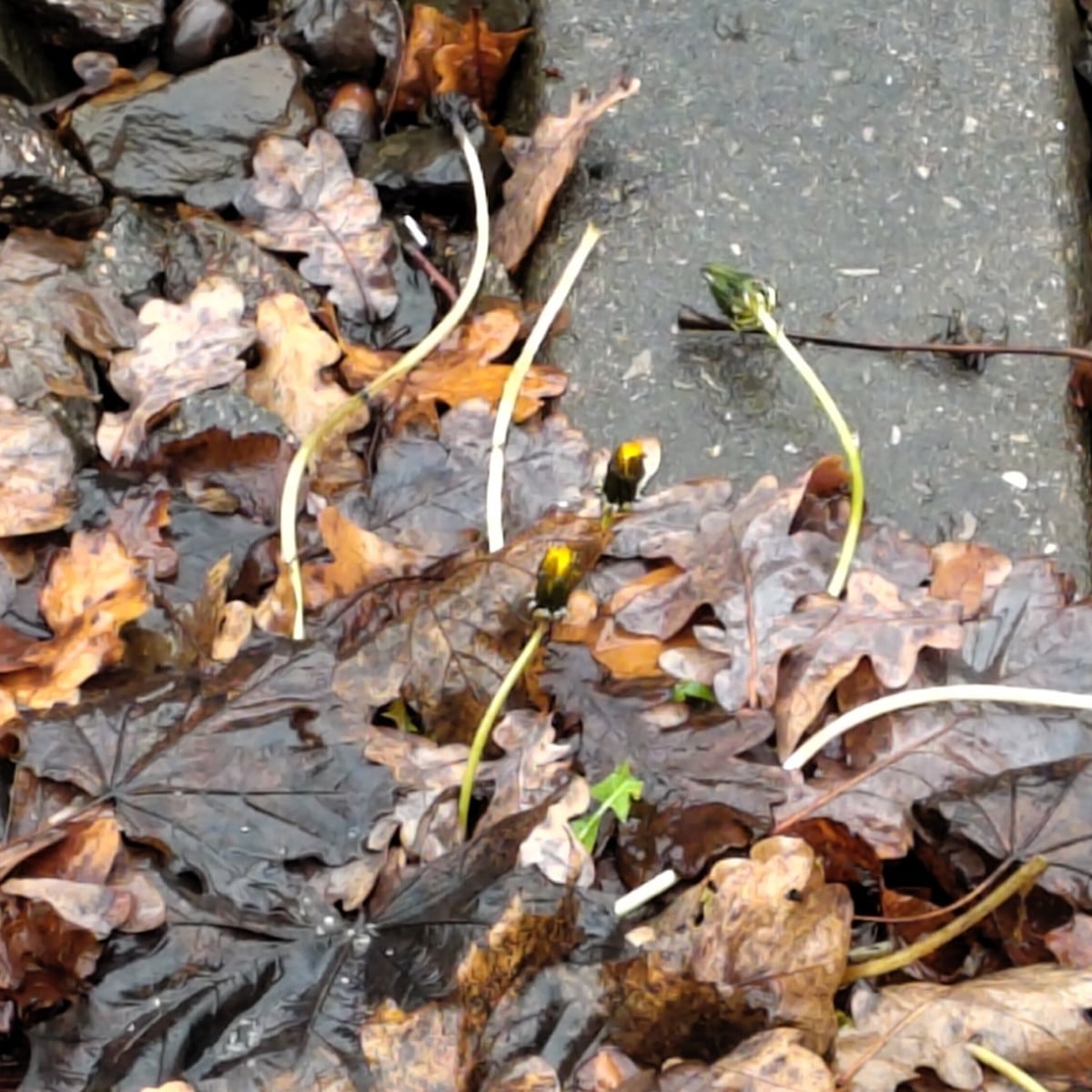
Liked 7 times
Another post from the curiosities section: I noticed this dandelion at the streetcar stop in a 'wintry' 13°C weather. It obviously thinks that snow and double-digit frost were enough winter and is now pushing new flowers through the foliage. It's a shame it's by the tracks, otherwise it would probably have ended up in my salad. 😋

Liked 17 times
As a suggestion for those who eat citrus fruits and have some time in the evening: simply cut a few simple shapes out of them with a sharp knife and dry them on the heater. The next day it was bone dry in our house ;)
Show 3 answersPopular Articles

Overwintering Parsley: How to Do It Successfully
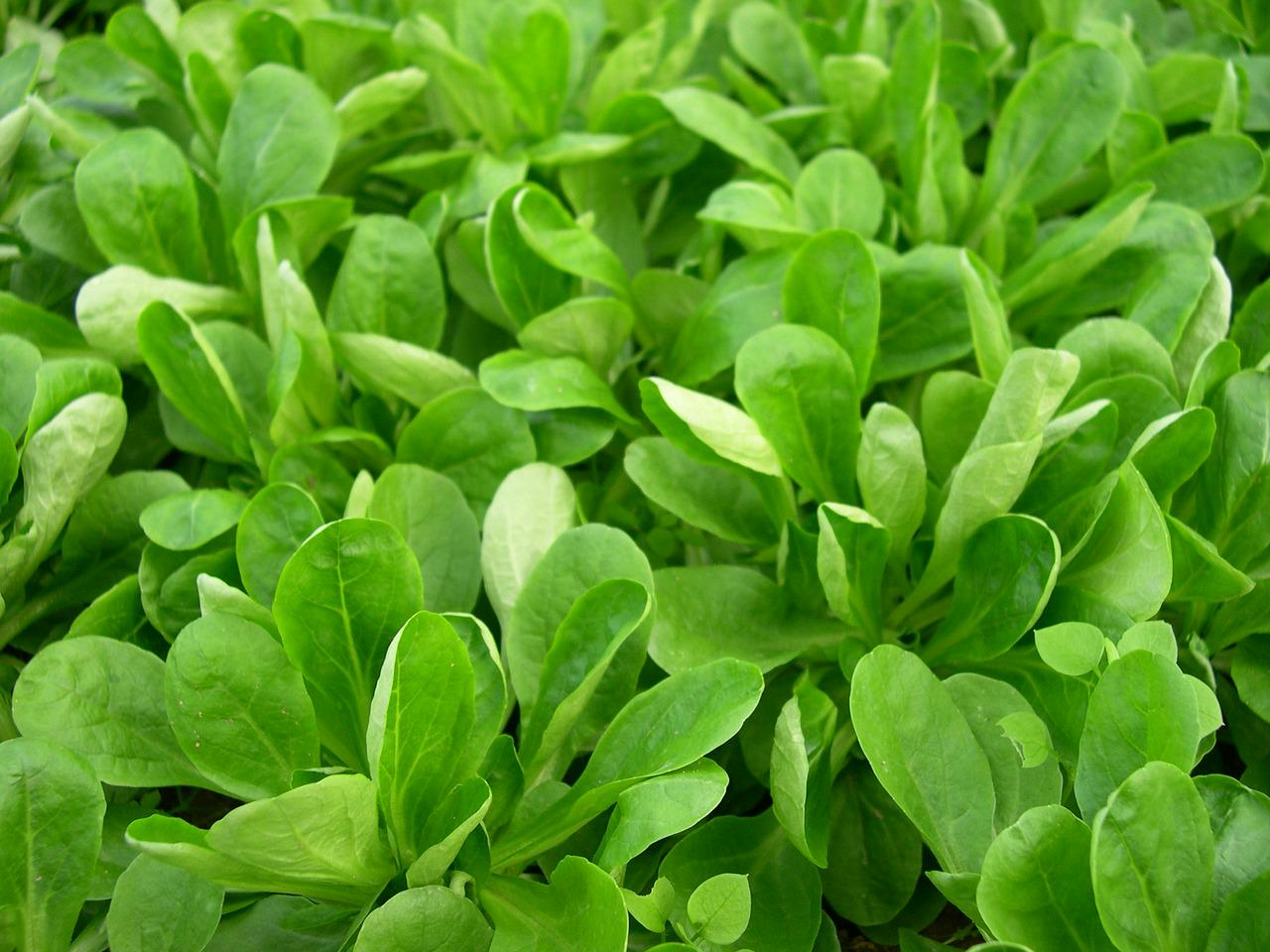
How to Grow Lettuce in Winter: Varieties, Sowing, Harvesting

Growing Sage Plant: Tips for Sowing and Harvesting
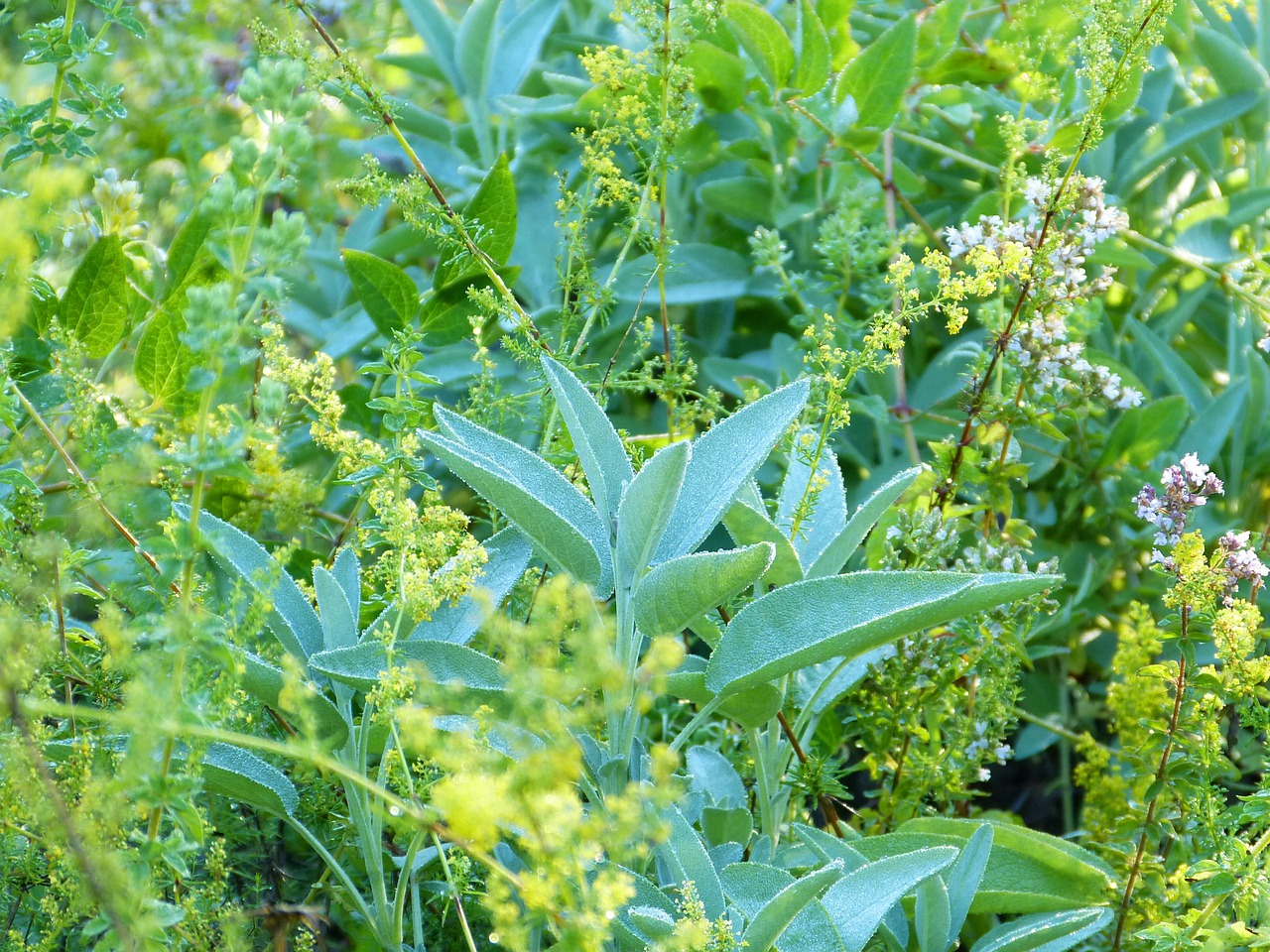
What Herbs Can Be Planted Together?
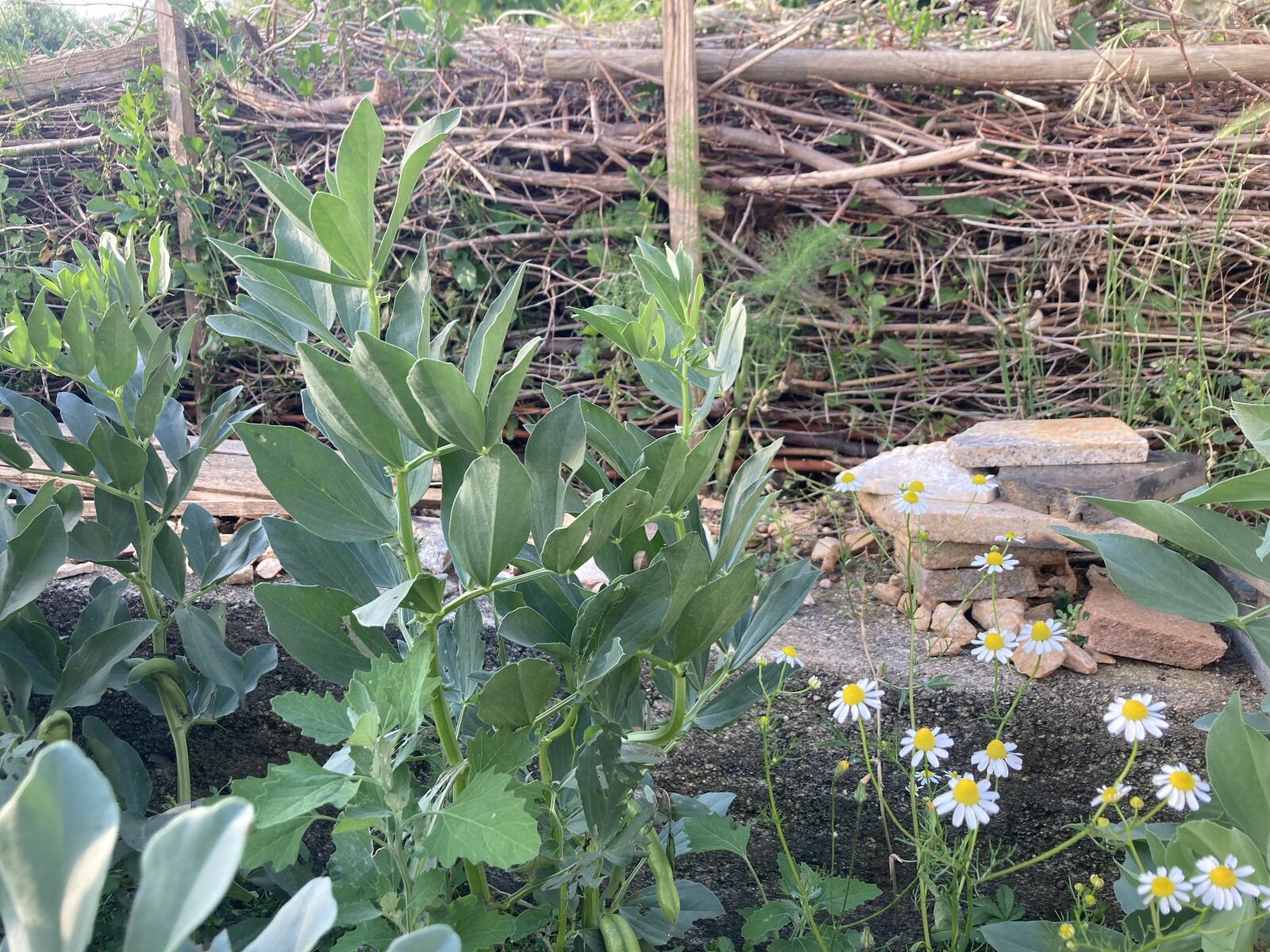
Create & Design a Permaculture Garden
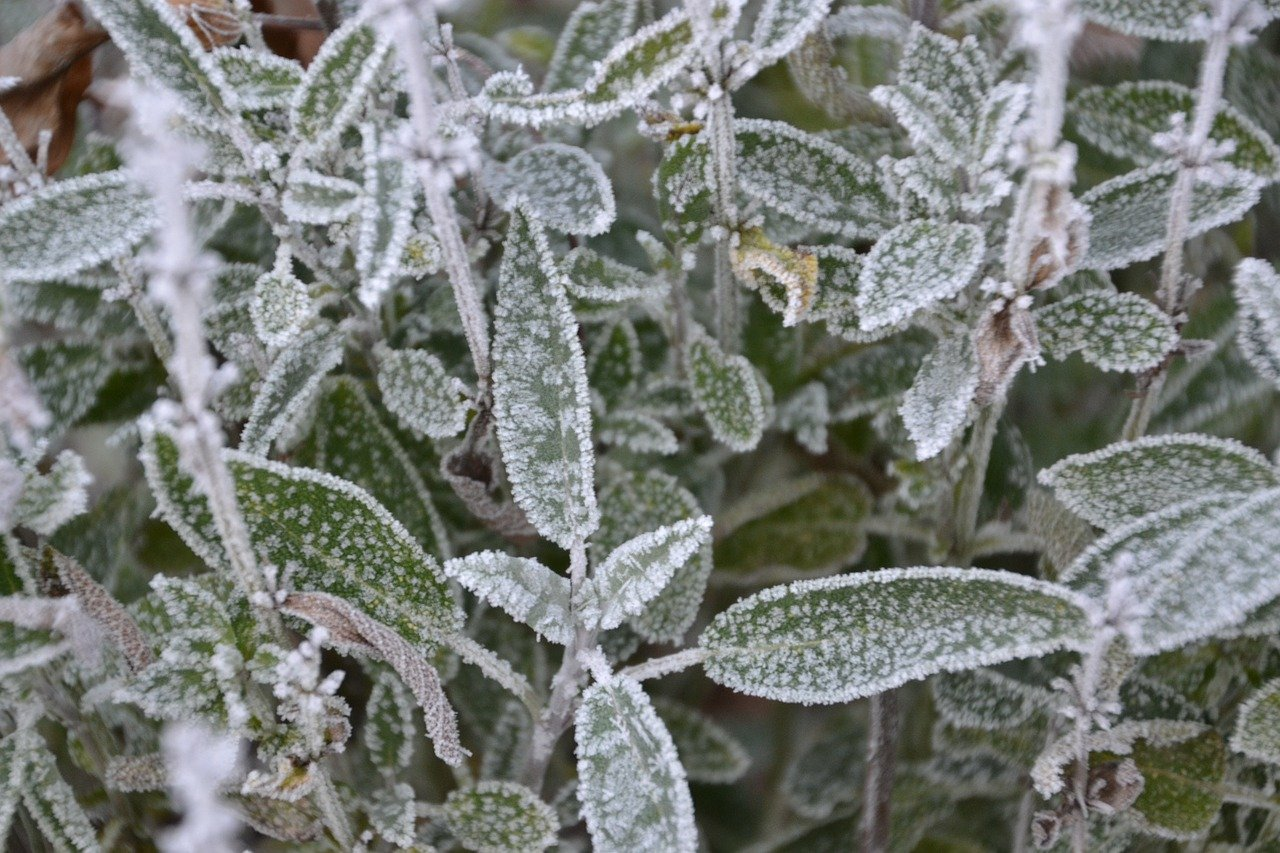
Overwintering Plants: Tubs, Pots and Raised Beds

Pruning, Fertilizing & Propagating Currants: Care Tips
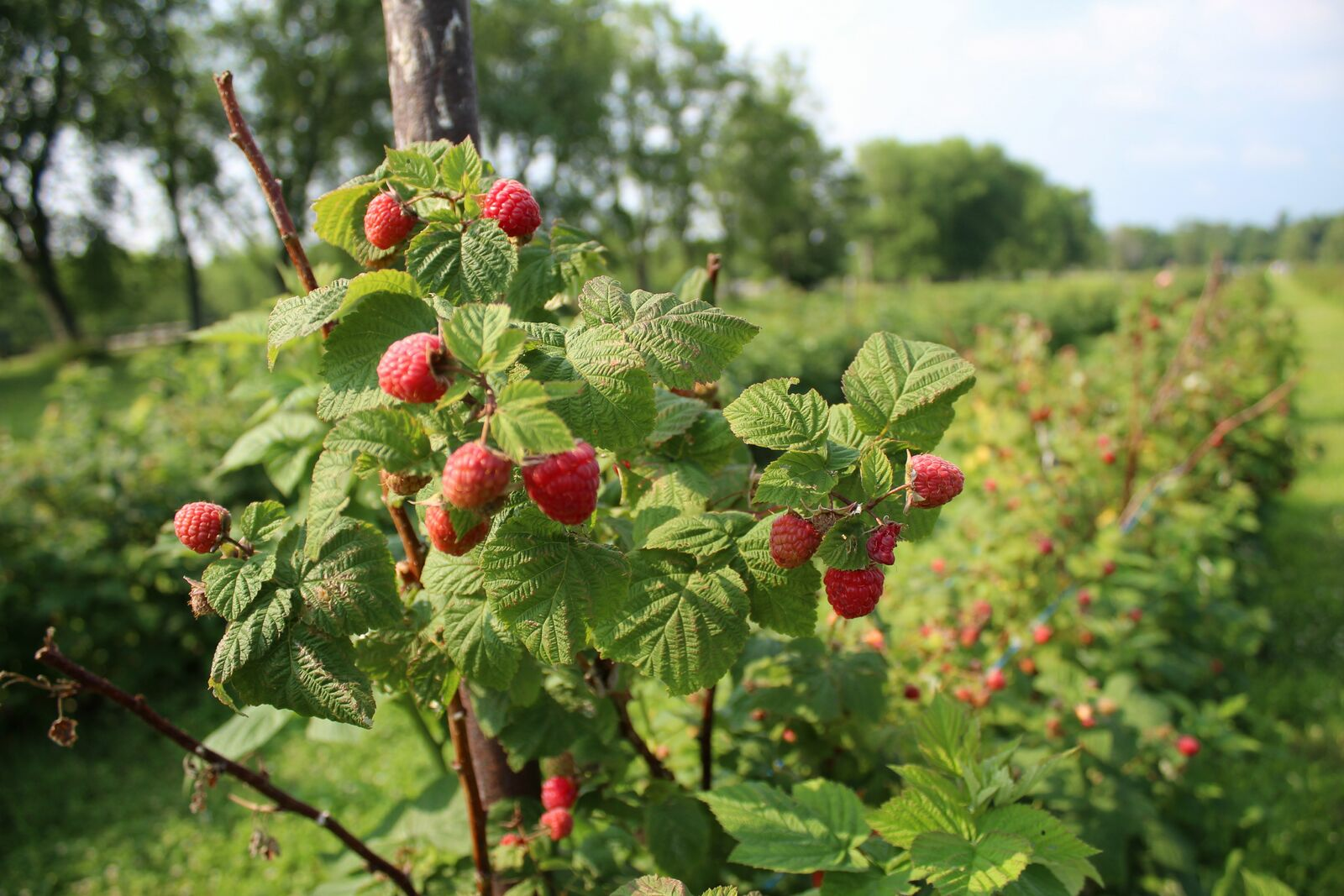
Pruning Raspberries: How to Do It

Vegetable Garden With Greenhouse: How to Use Greenhouse Effect
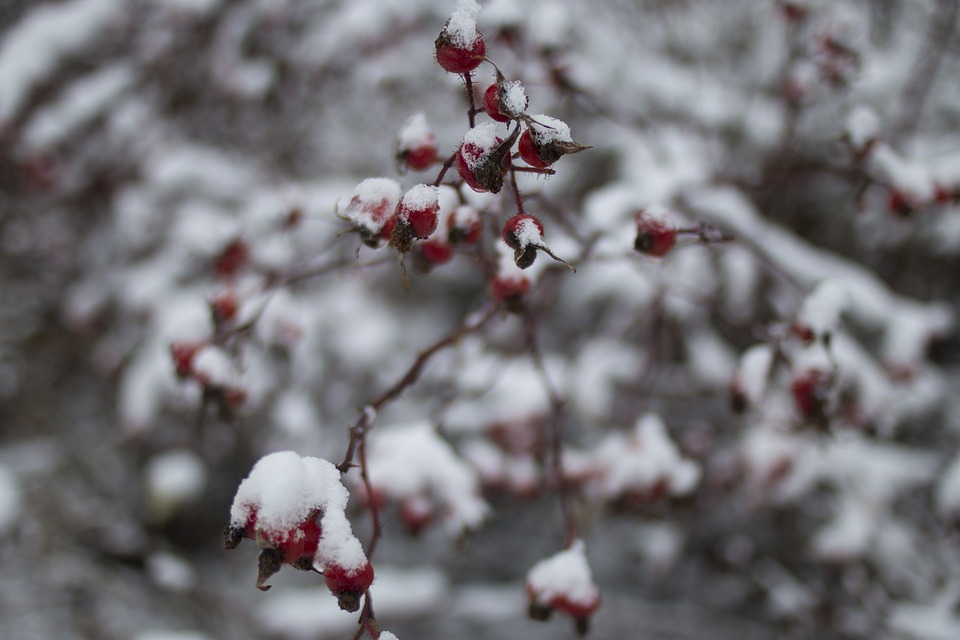
Winterizing Beds and the Garden: How to Do It
FAQ
How can I save water in the garden?
It is best to water in the morning or evening, use mulch, plant the soil all year round and collect rainwater. You can find more tips in the article.
What are the benefits of mulching against drought?
Mulch protects the soil from evaporation and keeps moisture in the soil for longer.
What role does soil quality play in saving water?
A humus-rich, loose soil stores water better and helps plants to survive dry periods.
What can I do to make optimum use of rainwater?
Collect rainwater, e.g. with a rain barrel, and use it for watering instead of wasting drinking water.